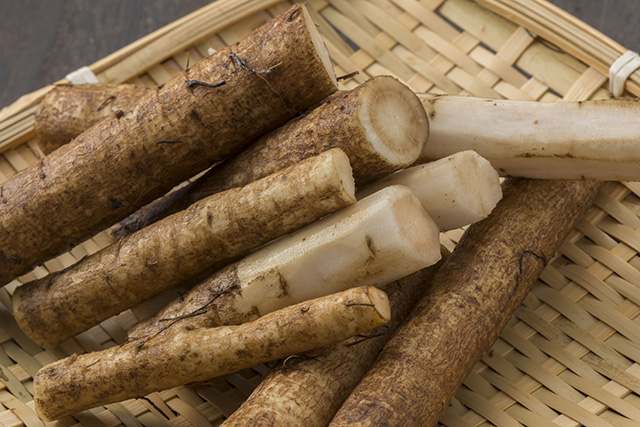
The burdock plant (Arctium lappa), also referred to as the great burdock, is part of the sunflower family. It’s a biennial plant that easily grows regardless of sunshine conditions and thrives in undisturbed areas. The plant is native to the Eurasian continent, where it’s seen almost everywhere, from forests, streams, to even roadsides and waste areas. It’s also been found in other regions of the world, where it has been used for food and medicine or regarded as a weed. In the U.S. and Canada, burdocks are particularly abundant, growing from coast to coast in the areas bordering the two countries.
The root is the part that’s mostly used in food and medicine. It reaches a depth of up to two feet and contains most of the plant’s nutrient content. People who consume it peel away the brown outer layer, using the inside of the root which they describe to have an earthy, mildly bitter taste. In Japan, mainly, burdock roots are commonly pickled.
In terms of nutrients, the burdock is no pushover: It contains more than a decent amount of nutrients and is low in calories and fat. The roots are an excellent source of protein, calcium, phosphorus, potassium, and folate – all of which are important for supporting metabolism, growth, and development. Potassium is needed for electrolyte and pH balance. Folate, on the other hand, does a variety of work: It helps with the metabolism of amino acids and is linked to both red blood cell formation and DNA synthesis. (Related: Wild Burdock Root Cleanses Blood, Clears Acne and Speeds Weight Loss.)
The roots, in particular, are a great source of inulin, a prebiotic that helps with the upkeep of the gastrointestinal tract. Inulin also gives burdock roots its anti-diabetes property. Studies have shown that inulin benefits the gut microbiome the most, allowing good bacteria to develop and produce beneficial short-chain fatty acids. It also improves the pH level of the intestines, preventing the growth of pathogenic bacteria.
Aside from these, burdock root also has various phytochemicals. These include lignans, triterpenoids, and polyacetylenes – which improve blood circulation and help manage diabetes. It contains caffeic acid and other flavonoids which are known to have reduced inflammation and prevent damage from free radicals.
The many uses of burdock around the world
Many indigenous tribes in North America have included the burdock as part of their diets or medicines. The Iroquois, Cherokee, and Delaware, for example, use the roots to treat rheumatism and skin conditions. Some tribes also use it as a blood cleanser, as well as a treatment for venereal diseases. The roots were also consumed as vegetables, drying and storing it for the colder months.
In Europe, as well as in China and Japan, the burdock root has long been used for its therapeutic properties. In Japan, the root is used in traditional medicine as a diuretic and a blood purifier. It is also found in folk treatments in Europe as a possible treatment for cancers.
These days, Western herbalists use burdock roots as a prebiotic to help maintain healthy skin, support the lymphatic system, and enhance detoxification. It’s also suggested for people with skin conditions such as acne and psoriasis, as well as those with gout, rheumatoid arthritis, and styes.
Interested in learning more about burdock's healing properties? Go to Food.news today.
Sources include:
Please contact us for more information.























